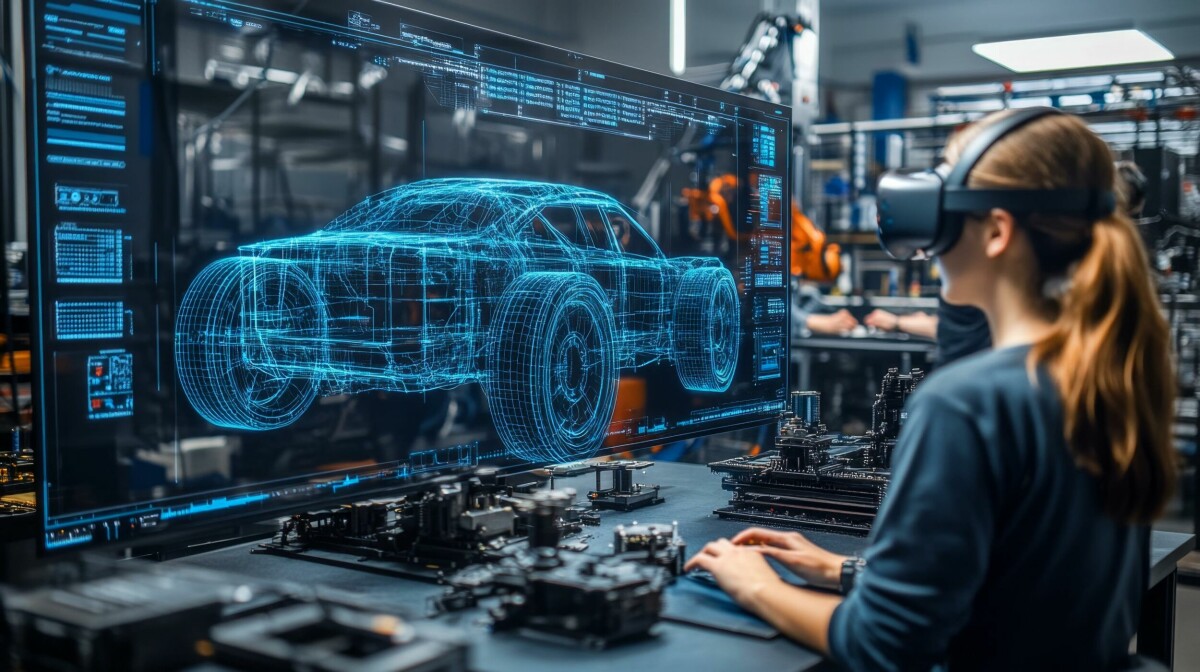Vehicles continue evolving at a rapid rate, displaying new technologies each day. We can see new technology applications in our daily lives as car companies and mechanics make these changes.
With these technological advancements, the car maintenance industry is also changing dramatically. How will car maintenance change in the future technology-driven world? Find out.
The current system for car maintenance
Routine auto maintenance follows a fairly traditional schedule. You can expect to see oil changes, brake pads replaced, tire rotations and inspections in your local garage. Most drivers depend on their service providers to diagnose and repair problems, but this is usually only done when something goes wrong. Although familiar, this reactive approach usually results in higher repair costs and unexpected breakdowns.
Predictive Maintenance: The Future of Maintenance
Sensors are driving the new trend in car maintenance. Modern cars are equipped with diagnostic systems built in that can detect minor problems as they occur. Predictive maintenance goes one step further by leveraging real-time information to predict issues before they happen.
Different auto companies are testing technologies that detect and alert early signs of wear on vehicles. These systems warn the driver when a component is about to fail, which reduces the risk of expensive repairs and accidents. As more cars are connected, predictive maintenance will become commonplace.
Drivers can be significantly impacted by predictive maintenance. Early detection of problems can prevent costly repairs and extended vehicle downtime. A smarter diagnostic also ensures accurate repairs.
Maintenance of self-driving cars
Autonomous vehicles are affecting multiple industries , including the tire industry. For self-driving vehicles to work properly, they rely on a technological infrastructure, particularly those with advanced sensors such as LIDAR. technology is behind many types of self-driving vehicles. Maintaining an autonomous vehicle requires more than brake and oil checks. The vehicle’s tech stack must also be optimized.
Sensor calibration is essential to avoid collisions and other issues in self-driving cars. Navigation could be dangerous if the radar or camera malfunctions. The software in these cars will require updates just as smartphones do.
In order to prevent hacking and data breaches, cybersecurity will be a key form of car maintenance. Fleet operators that rely on autonomous cars, like robotic taxi services or fleets of self-driving vehicles, will depend on service providers who are skilled in AV technology.
Integration of New Technology
Internet of Things transforms everyday devices, such as cars, into powerful data collectors. The connected cars of today analyze the driver’s behavior, the road conditions and the health of the vehicle.
The IoT-equipped vehicles of tomorrow will be able to share data with manufacturers and service stations directly. Your mechanic may be aware of a problem with your car before you do.
Tesla vehicles communicate with servers already to send updates or flag problems so mechanics can remotely fix them. Future integrations will likely bring the same level of connectivity around the globe. The drivers will have fewer surprises when it comes to repairs and maintenance.
The seamless communication allows service providers to prepare parts in advance, which minimizes downtime for drivers and ensures a smoother process of repair. Drivers will feel less stress and be able to carry out repairs more quickly with the new technology.
Advanced Materials for Repairs
3D Printing Technology is another exciting trend in auto maintenance. Carbon fiber composites are a good example of a vehicle made from lighter, but stronger materials.
Manufacturers expect 3D printers will revolutionize production of replacement components. Mechanical engineers will no longer have to wait weeks for a discontinued part. They can now print specific components on demand.
Repairs will be faster and more precise, allowing car owners to enjoy a stress-free experience. This precision will lead to a higher-quality restoration of damaged vehicles.
Remote Software Updates
The software is becoming one of the most important parts of maintaining an automobile. Minor issues will be resolved by vehicles via over-the-air updates (OTA). You can sit back and wait for your car to receive a software update without having to visit a garage.
OTA updates offer benefits that go beyond their convenience. They can enhance vehicle performance, add new features, correct software bugs and improve cybersecurity without requiring a service appointment.
OTA updates can reduce the costs of recalls and on-site maintenance for manufacturers. They also help to minimize the environmental impact associated with unnecessary travel.
Sustainable Maintenance Applications
Car maintenance is becoming more eco-friendly as companies place greater emphasis on sustainability. Future technology will have a lower environmental impact than current methods, which focus on immediate fixes rather than sustainable practices.
Electric vehicles (EVs) have significantly fewer components than combustion engine cars. The result is less maintenance and landfill waste. Gleichzeitig, the industry is moving towards more eco-friendly products, such as biodegradable liquids and recyclable components.
Another trend that will influence sustainable vehicle maintenance is the increase in repairs. Repairing parts rather than replacing or destroying them can save drivers money, reduce waste and decrease the need for new materials. Remanufacturing is a practice that automakers and repair shops have begun to adopt. This involves restoring used materials and parts for reuse.
What Does this mean for drivers?
It’s not just about fixing your car anymore. The future of auto maintenance involves smarter, quicker, and more sustainable maintenance practices.
Reactive repairs are quickly becoming obsolete. Proactive maintenance and the latest technology will provide safer and more efficient driving. We can see a lot of improvements in driving and car repairs as we look forward to the future.
Whether you are preparing yourself for the arrival of self-driving cars or just want to improve your driving habits, it is important to adapt to these trends to stay ahead. As vehicles become more sophisticated, partnerships between drivers and garages will also evolve.

